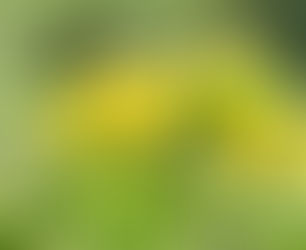OREJA DE ZORRO
- Alfredo Unda & Bruce Cassels
- 7 mar 2021
- 2 Min. de lectura
Actualizado: 25 oct 2023
Aristolochia chilensis Bridges ex. Lindl.
Marzo 2021
Planta rastrera endémica de Chile. Crece desde Atacama a la Región Metropolitana, desde la costa hasta la precordillera, en terrenos planos o laderas asoleadas, siendo más frecuente hacia el litoral. Las hojas, de forma arriñonada, son de color verde claro con manchas irregulares más pálidas. Las flores son tubulares, de color púrpura-parduzco, con pelos blanquecinos que impiden la salida de los insectos que penetran en su interior atraídos por su fuerte olor. Florece durante el invierno y la primavera. El fruto es una cápsula alargada que al madurar se abre como un farolito, dejando caer muchas semillas aplanadas.
De valor ornamental como cubresuelo floral de gran cobertura es útil en zonas arenosas y secas. Las flores son llamativas por su estructura y largo período de floración, más que por el color. Sus hojas moteadas también son atractivas. Necesita alta luminosidad, suelos livianos con buen drenaje y poca agua, aunque tolera más riego. Soporta heladas que no sean excesivamente intensas y repetidas.
La oruga de la mariposa nativa Battus polydamas archidamas, la más grande de las diurnas nativas de Chile, de alas negras por arriba con un par de hileras de manchas blanquecinas hacia los bordes, se desarrolla exclusivamente en esta planta tóxica para otras especies. Las mariposas son bastante visibles en estos días en La Aurora.
OREJA DE ZORRO (FOX-EAR)
Aristolochia chilensis Bridges ex. Lindl.
March 2021
Chilean endemic low creeper. It grows from Atacama to the Santiago Metropolitan Region, from the coast to the foothills of the Andes, on flat terrain or sunny slopes, being more frequent towards the coast. The flowers are tubular, purple-brown, with whitish hairs that prevent the exit of insects that enter attracted by their strong odor. It blooms during winter and spring. The fruit is an elongated capsule that opens like a little lantern when ripening, dropping many flattened seeds.
A valuable ornamental as a floral groundcover of great coverage, useful in sandy and dry areas. The flowers are striking because of their structure and long flowering period, rather than for their color. The mottled leaves are also attractive. It needs high luminosity, light soils with good drainage and little water, although it tolerates more irrigation. It withstands frost if are not excessively intense and repeated.
The caterpillar of the native butterfly Battus polydamas archidamas, the largest Chilean butterfly, with wings that are black on their upper side with a pair of rows of whitish spots near the edges, develops exclusively on this plant which is toxic to other species. The butterflies are quite visible these days in La Aurora.
Fuentes/ Sources:
Flora nativa de valor ornamental. Chile Zona Centro.
P. Riedemann & G. Aldunate. Ediciones Jardín Botánico Chagual.

Aristolochia chilensis, detalle de flor y hojas
Aristolochia chilensis, detail of the flower and leaves

Cubresuelo de hojas moteadas
Mottled leaves as ground cover

Battus polydamas archidamas, mariposa nativa alimentándose de néctar de Lantana
Battus polydamas archidamas, native butterfly feeding on Lantana nectar.

Oruga de la mariposa en octubre 2021
Butterfly caterpillar in october 2021









































































Comentarios